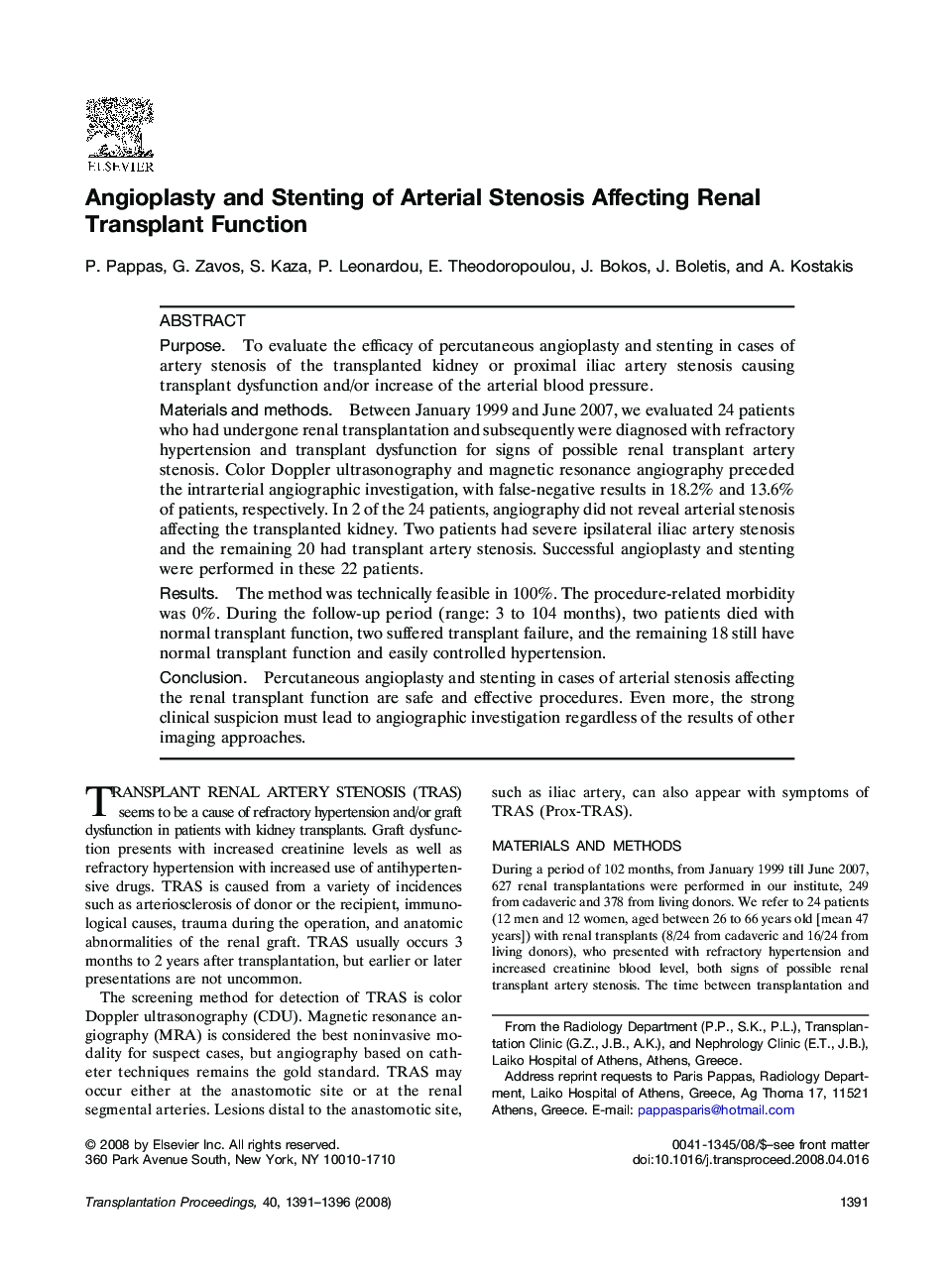| Article ID | Journal | Published Year | Pages | File Type |
|---|---|---|---|---|
| 4258225 | Transplantation Proceedings | 2008 | 6 Pages |
PurposeTo evaluate the efficacy of percutaneous angioplasty and stenting in cases of artery stenosis of the transplanted kidney or proximal iliac artery stenosis causing transplant dysfunction and/or increase of the arterial blood pressure.Materials and methodsBetween January 1999 and June 2007, we evaluated 24 patients who had undergone renal transplantation and subsequently were diagnosed with refractory hypertension and transplant dysfunction for signs of possible renal transplant artery stenosis. Color Doppler ultrasonography and magnetic resonance angiography preceded the intrarterial angiographic investigation, with false-negative results in 18.2% and 13.6% of patients, respectively. In 2 of the 24 patients, angiography did not reveal arterial stenosis affecting the transplanted kidney. Two patients had severe ipsilateral iliac artery stenosis and the remaining 20 had transplant artery stenosis. Successful angioplasty and stenting were performed in these 22 patients.ResultsThe method was technically feasible in 100%. The procedure-related morbidity was 0%. During the follow-up period (range: 3 to 104 months), two patients died with normal transplant function, two suffered transplant failure, and the remaining 18 still have normal transplant function and easily controlled hypertension.ConclusionPercutaneous angioplasty and stenting in cases of arterial stenosis affecting the renal transplant function are safe and effective procedures. Even more, the strong clinical suspicion must lead to angiographic investigation regardless of the results of other imaging approaches.
